Here the PIC10F200 (datasheet) is in use, an awesome powerhouse with memory for 256 instructions (each 12 bit wide) and 16 byte of main memory (and featuring a hardware stack of depth two!).
The street price of the IC is about one dollar or one euro or so.
The pummer uses one I/O pin for LED output and one for solar cell light / dark detection.
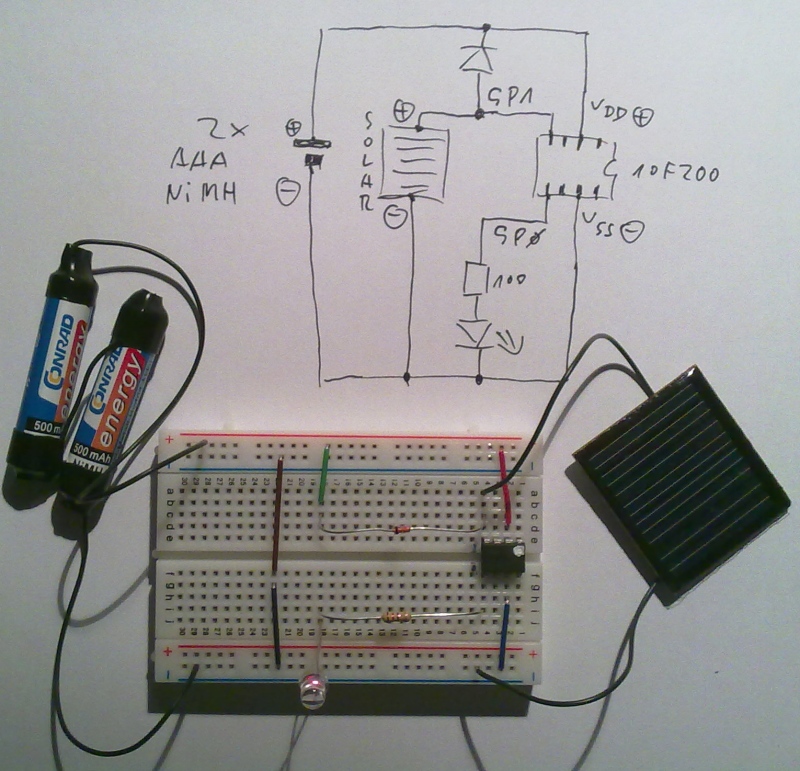
(click pic to enlarge)
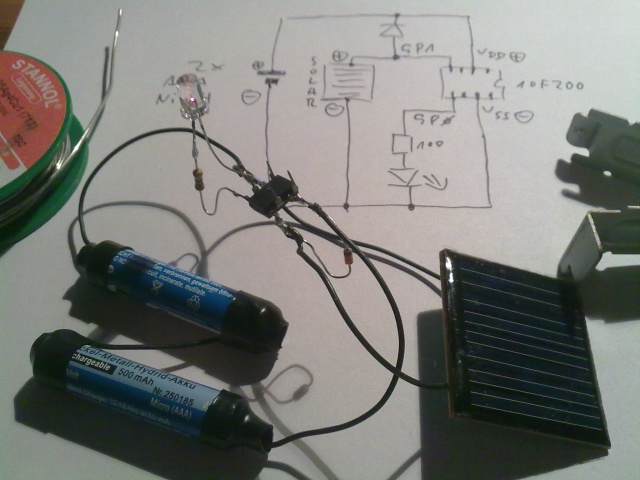
(click pic to enlarge)
As diode i used a BAV20, but i think any other will do. Using one with lower voltage drop (germanium diode) should give a better charge voltage. I did not try this way, instead i added another 0.5 volt solar element to the 4 volt one, suitable for three AAA accus ;-)
The flash of a ``real'' pummer is more bright, than simply lighting the LED here for some time, but it is imho good enough ;-)
The voltage of the solar cell is used as light detection sensor with high level indicating charging and no blinking and a low level indicates darkness, where we start blinking!
On high level without blinking the PIC is put into sleep mode, drawing a very low input current (100 nA or so). To wakeup the PIC the ``wake-up on pin change'' feature is used: If the input level of the solar cell flips, the PIC wakes up and the value is checked.
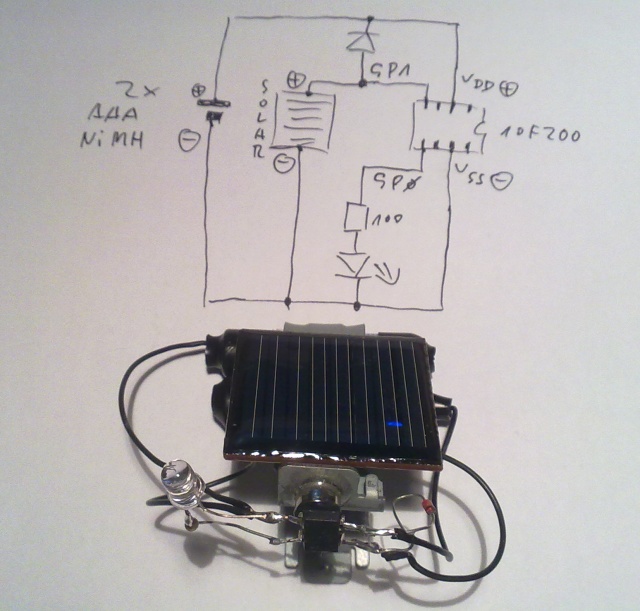
(click pic to enlarge)
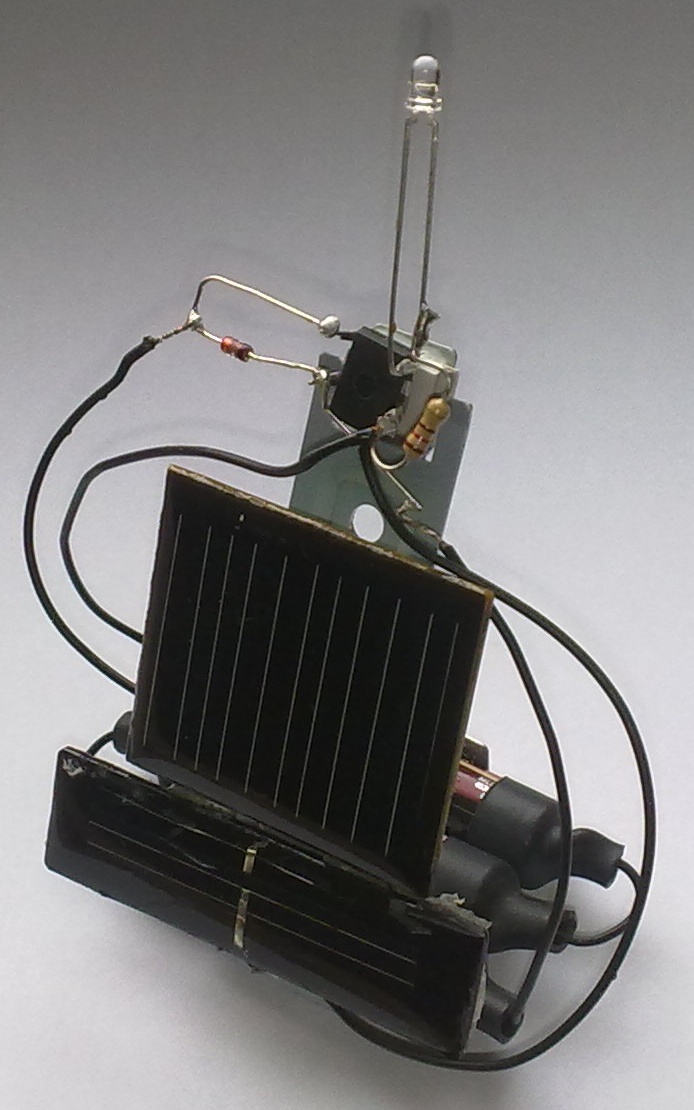
(click pic to enlarge)
the source: pic-pummer.asm
the hexfile: pic-pummer.hex
|
To program the PIC there are awesome simple RS232 (via PC serial
connection) based circuits out there.
I started with a JDM (to JDM's PIC-Programmers) based version from ebay (around 10 euro or so). As programmer software WinPic800 (to winpic800's homepage) worked very well. |
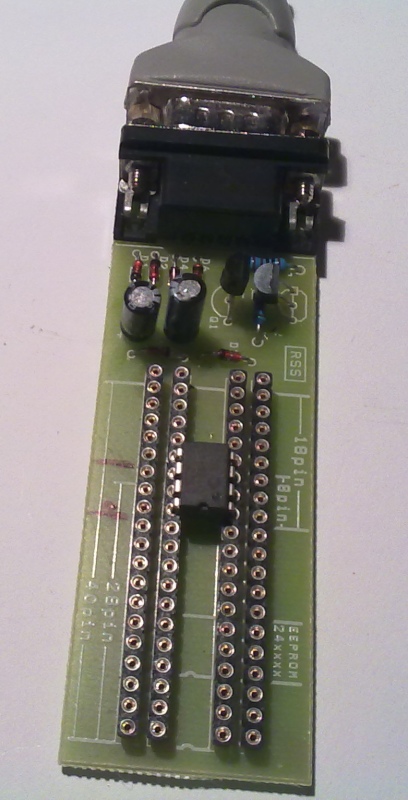 (click pic to enlarge) |
|
Then I switched to the K8076 board from velleman (to K8076
product page, got it from conrad [note: page is in german]).
The ZIF socket is very helpful to avoid contact problems, but be sure to check the delay setting: if you can read a PIC, but get errors writing to (like me, with windows vista), increasing the dealy setting made it work. The PicProg2009 (to the download page) programmer software works very well, but misses automatic reload of the hex file on changes, like the WinPic800 does. Both PIC programmers are connected with a streight through serial cable, not a null modem cable. A serial extension cable works very well for me. |
 (click pic to enlarge) |
Some links about pummers:
• many sources at Google images
• to the beam wiki (www.beam-wiki.org)
And about the PIC microprocessor:
• to the wikipedia's pic page
• to the sprut's pic pages (www.sprut.de) [note: german only]
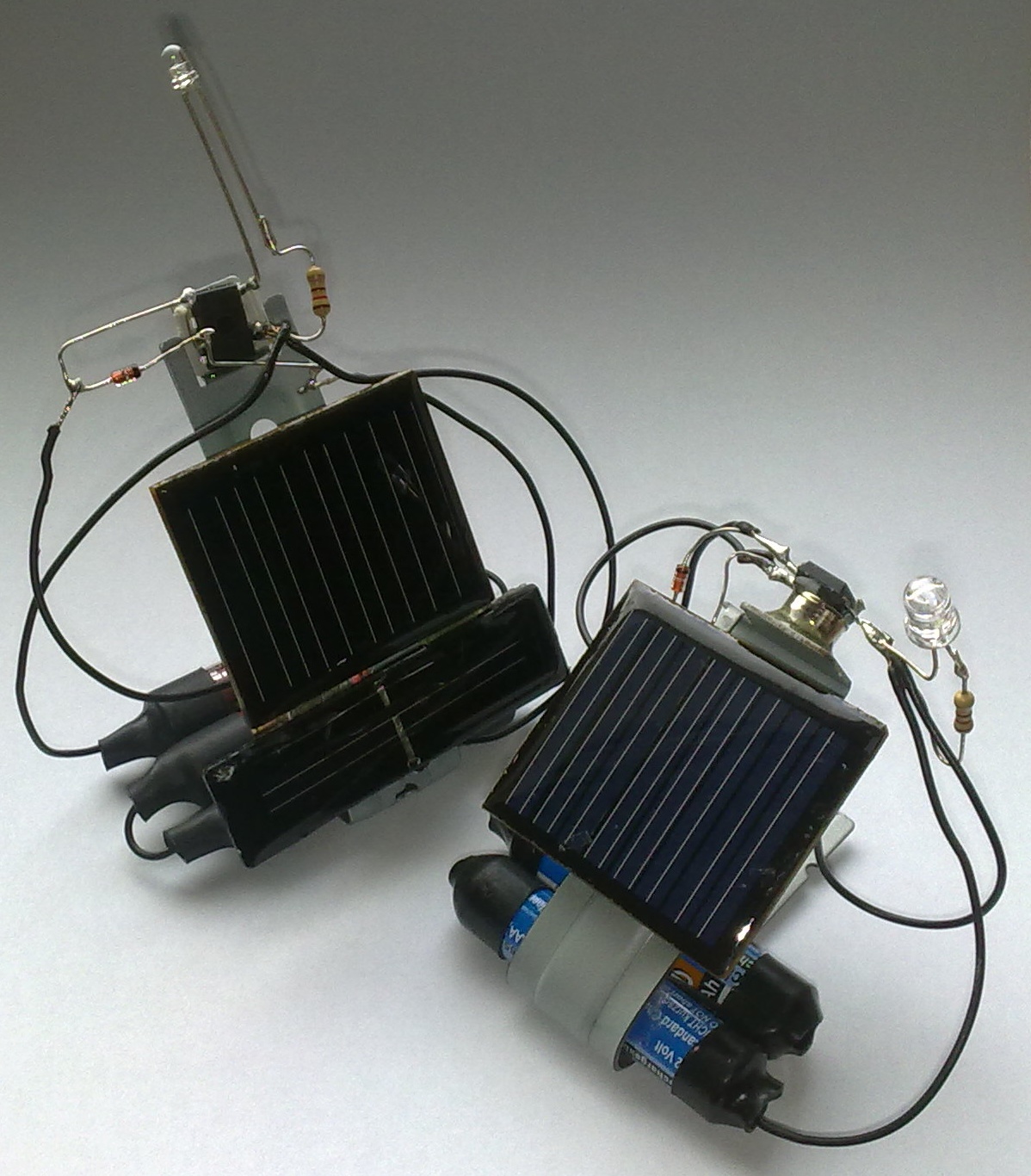
(click pic to enlarge)
| And if you like, here is a little movie about the PIC pummer in action:
avi format (~4 mb - moderate quality) mpeg format (~4 mb - low quality)
|
|
